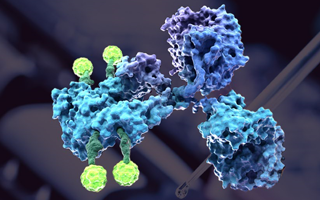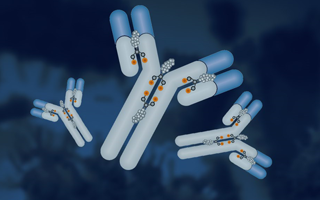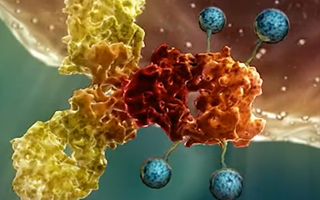Intracellular Retention Time Enhancement Service
Antibodies are prominent anti-cancer agents that can recognize tumor surface antigens with high affinity and specificity. They provide a powerful tool that accurately targets and eliminates cancer cells with minimal effects on normal tissues. Antibodies exert a variety of action modes, among which internalization is gaining more and more attention.
Receptor-mediated endocytosis (RME) is a widely used mechanism to achieve antibody internalization, especially for the development of antibody-drug conjugates (ADCs) and bispecific antibodies (bsAbs) against intracellular targets. Certain cell surface receptors can be programmed to be incorporated into the cell and join intracellular trafficking after ligand binding. The corresponding antibodies will follow this route and be internalized upon receptor binding. High receptor-binding affinity, which can be improved by methods such as affinity maturation, often corresponds to a high potential of internalization.
Once inside the cell, the receptor-antibody complex is transferred from early endosome to various subcellular locations along the endoplasmic reticulum (ER) system with a high potential of being transported to the lysosome for degradation. Another pathway for internalizing antibodies is to interact with the neonatal Fc receptor (FcRn). The resulted antibody-FcRn complex is recycled back to the cell surface.
Enhancement Approaches to Extend Intracellular Retention Time
The ultimate intracellular location plays a crucial role in the efficacy of both ADCs and intracellular targeting bsAbs. Since both their targets are within cells, it is important to increase their intracellular retention time. To achieve this goal, the antibody should (1) dissociate from antigen within the endosome and (2) experience minimal interaction with FcRn to prevent recycling. Scientists at Creative Biolabs utilize various mutagenesis approaches to help prolong the antibody intracellular retention time after internalization.
The variable region surface charge also contributes substantially to the binding affinity of an antibody. Scientists at Creative Biolabs can modulate the binding affinity of the antibody by performing a series of site-directed mutagenesis and change the position and quantity of the His residue in the variable region. This “His-Scan” approach generates antibodies that show high binding affinity at physiological pH (~7.4) while dissociates from the receptor once internalized and exposed to a more acidic endosomal pH (~6.0). The dissociated antibody is more likely to exert a longer intracellular retention time and be trafficked to the desired locations.
FcRn interaction is another concern in generating antibodies with long intracellular retention time. FcRn binds to the CH2-CH3 hinge region of an IgG. Collective evidence indicates certain amino acids in this region are particularly important for this interaction. Using site-directed mutagenesis techniques, scientists at Creative Biolabs are able to modulate the IgG-FcRn interaction to facilitate intracellular retention.
With extensive experience in antibody engineering and mutagenesis, Creative Biolabs is dedicated to providing high-quality services and products to promote the field of immunology and immunotherapies. Our unique site-directed mutagenesis approaches will help to generate new generations of transbodies suitable for various intracellular targets. If you are interested in learning more details, please do not hesitate to contact us.
Platform:
Intracellular Antibody Development Platform
All of our antibody products and services can only be used for preclinical research studies. Do not use them on humans.
Related Services:

Welcome! For price inquiries, please feel free to contact us through the form on the left side. We will get back to you as soon as possible.
Contact us
USA
Tel:
Fax:
Email:
UK
Tel:
Email:
Germany
Tel:
Email:







